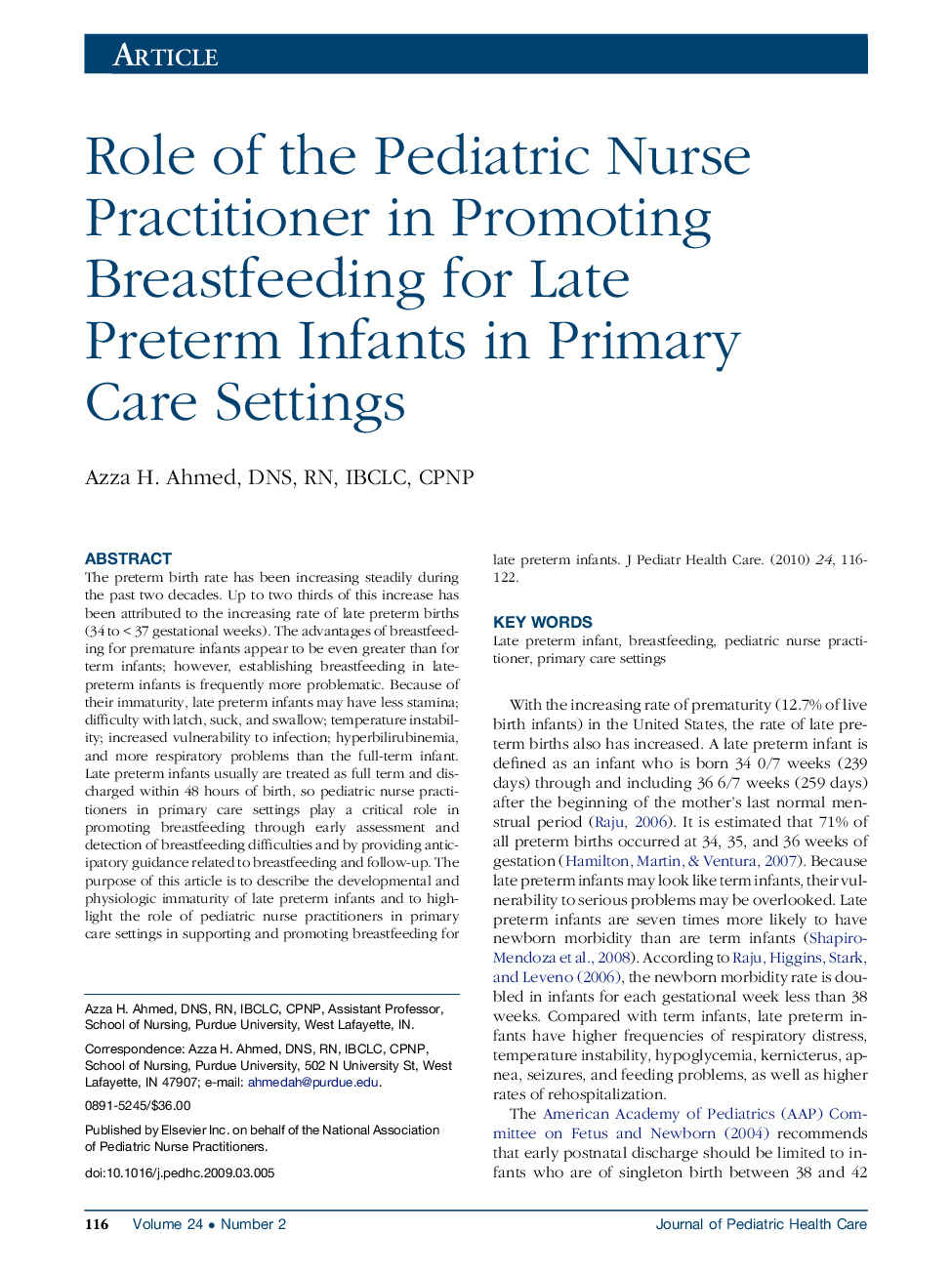| Article ID | Journal | Published Year | Pages | File Type |
|---|---|---|---|---|
| 2663082 | Journal of Pediatric Health Care | 2010 | 7 Pages |
The preterm birth rate has been increasing steadily during the past two decades. Up to two thirds of this increase has been attributed to the increasing rate of late preterm births (34 to < 37 gestational weeks). The advantages of breastfeeding for premature infants appear to be even greater than for term infants; however, establishing breastfeeding in late-preterm infants is frequently more problematic. Because of their immaturity, late preterm infants may have less stamina; difficulty with latch, suck, and swallow; temperature instability; increased vulnerability to infection; hyperbilirubinemia, and more respiratory problems than the full-term infant. Late preterm infants usually are treated as full term and discharged within 48 hours of birth, so pediatric nurse practitioners in primary care settings play a critical role in promoting breastfeeding through early assessment and detection of breastfeeding difficulties and by providing anticipatory guidance related to breastfeeding and follow-up. The purpose of this article is to describe the developmental and physiologic immaturity of late preterm infants and to highlight the role of pediatric nurse practitioners in primary care settings in supporting and promoting breastfeeding for late preterm infants.
